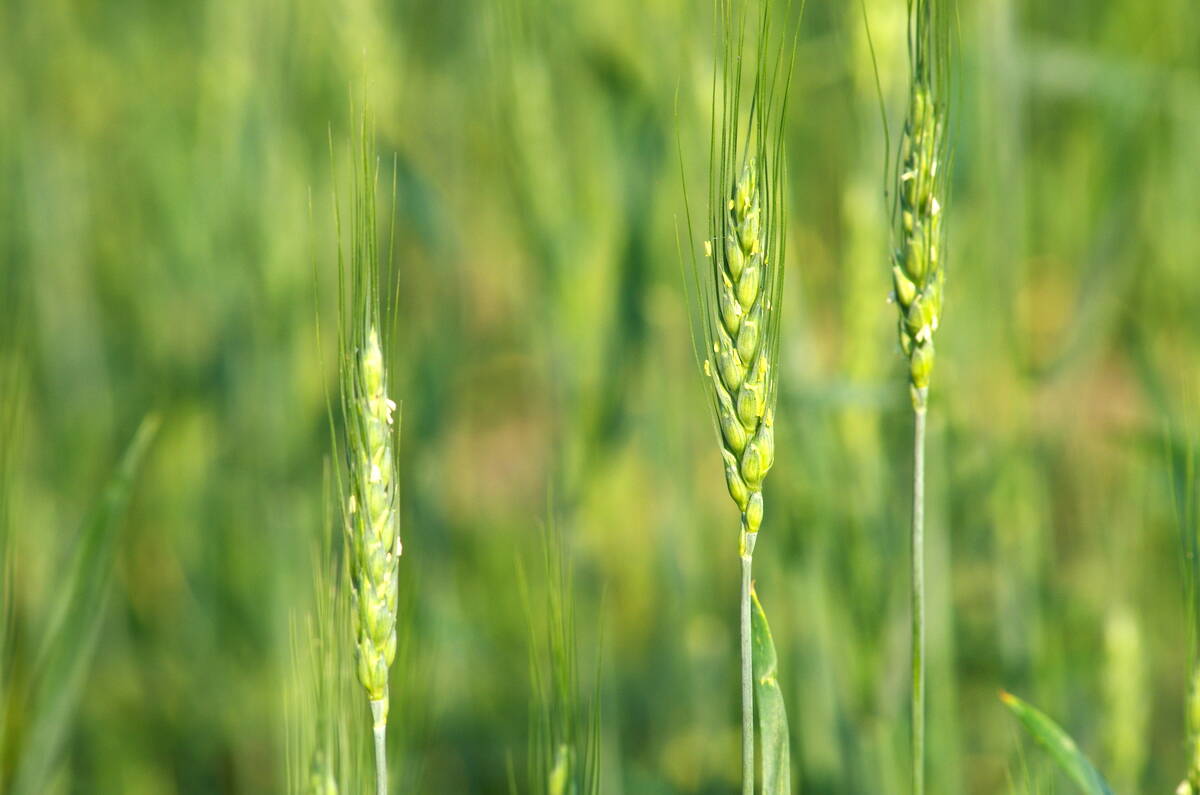In what’s billed as “the largest and fastest AgriRecovery relief package to date,” Prairie crop producers will get $30 for each acre flooded in major rainstorms this spring and summer.
The federal, Saskatchewan, Manitoba and Alberta governments on Thursday pledged to cost-share a $450 million AgriRecovery package to help farmers take “measures to protect, rehabilitate and manage affected cropland.”
“Crop insurance is the first line of defence for farmers when dealing with excess moisture; unfortunately this year, excessive moisture across the Prairies is creating extreme financial challenges for many farmers,” Manitoba Agriculture Minister Stan Struthers said in a release.
Read Also

California researchers create nitrogen-fixing wheat
U.S. crop breeders have created a wheat variety capable of creating its own nitrogen fertilizer.
“Farmers need a rapid response to help them with their current cash flow situation and get on with operations during the balance of this cropping year.”
“This payment will certainly help address the costs of maintaining these lands so producers can have a better year in 2011,” Alberta Ag Minister Jack Hayden said.
The AgriRecovery arm of the federal/provincial Growing Forward farm policy framework is meant to address gaps not covered by existing programs and provide a quicker government response to farm-related disasters.
The federal government will foot 60 per cent of the package’s budget, with the provinces providing 40 per cent. The bulk of the funds will go to Saskatchewan, which will receive a total of $360 million. The Manitoba package will be worth $62 million, with the remaining $38 million Alberta bound.
Farmers, the governments said Thursday, can expect information soon from their provincial program delivery agents about this package’s parameters and application details.
The funding announcement comes on the heels of this week’s regularly scheduled meeting of the federal and provincial agriculture ministers in Saskatoon, and a visit to the rain-soaked Yorkton area in southeastern Saskatchewan Thursday by Prime Minister Stephen Harper.
“Our farmers work hard through all conditions and circumstances to provide food for people across this country and around the world,” Harper said in a separate release. “Our government will help them recover from the exceptional circumstances caused by the rains and flooding.”
Harper was accompanied by Saskatchewan Premier Brad Wall, who last Friday named a cabinet committee, chaired by Public Safety Minister Yogi Huyghebaert, to co-ordinate the province’s response to “unprecedented” flooding, including last week’s floods within the city of Yorkton.
“People are facing catastrophic losses as a result of these natural events and we need to make sure that all levels of government respond in a compassionate, timely and effective manner,” Wall said.
“Dire situation”
“The amount of funding relief is in line with what we were lobbying for, assuming that crop insurance and AgriStability work the way they were designed to work,” Ian Wishart, a Portage la Prairie, Man. farmer and president of Manitoba’s Keystone Agricultural Producers (KAP), said in a separate release Thursday.
Governments, KAP said, “must ensure this AgriRecovery relief package not only covers unseeded acres but also crops that were planted and destroyed without any production. It is critical that all cropland be maintained throughout the season in order for producers to prepare for the next crop year.”
Saskatchewan Agriculture Minister Bob Bjornerud, who hosted the ag ministers’ meeting in Saskatoon, came under criticism from provincial NDP leader Dwain Lingenfelter Tuesday for not asking for more funding for flooded cropland.
Lingenfelter called Bjornerud a “sellout” and cited media reports Tuesday quoting the minister as saying he would not ask for compensation of $100 per acre from Ottawa, as the NDP opposition had urged.
The Regina Leader-Post’s Angela Hall had quoted Bjornerud as saying that size of payment was “not realistic or affordable.”
“Farmers are a hardy bunch who are used to adversity, but the torrential rains have drowned hopes for many to harvest a crop this year,” Allen Oberg, a Forestburg, Alta. farmer and the new chairman of the Canadian Wheat Board, said in a separate release.
The governments’ announcement, he said, “provides a welcome measure of relief to those farmers, and shows an awareness of the seriousness and extent of the dire situation farmers are facing across the Prairies.”
The CWB currently projects between 10 and 12 million acres, or up to a fifth of Prairie cropland, went unseeded this season, while a number of seeded acres face damage from excess early-season rains.
The CWB has projected the Prairies’ seeded area for all wheat at 19.15 million acres; durum at 3.4 million acres; and barley at about 6.6 million acres, the smallest seeded areas for those crops since 1971, 1980 and 1965 respectively.
According to estimates quoted Thursday by Saskatoon’s StarPhoenix newspaper, Saskatchewan’s flooded acres alone during its record-wet spring account for about a third of its farmland, or 18 per cent of Canada’s farmland.
In Manitoba’s case, KAP added, there will be a “further need for special programming” in the Interlake region between Lake Winnipeg and Lake Manitoba, where rains in 2010 marked a third consecutive year of crop losses due to excess moisture.
“It will also be important for governments to monitor the livestock feed situation as the season develops,” the general farm group said.













